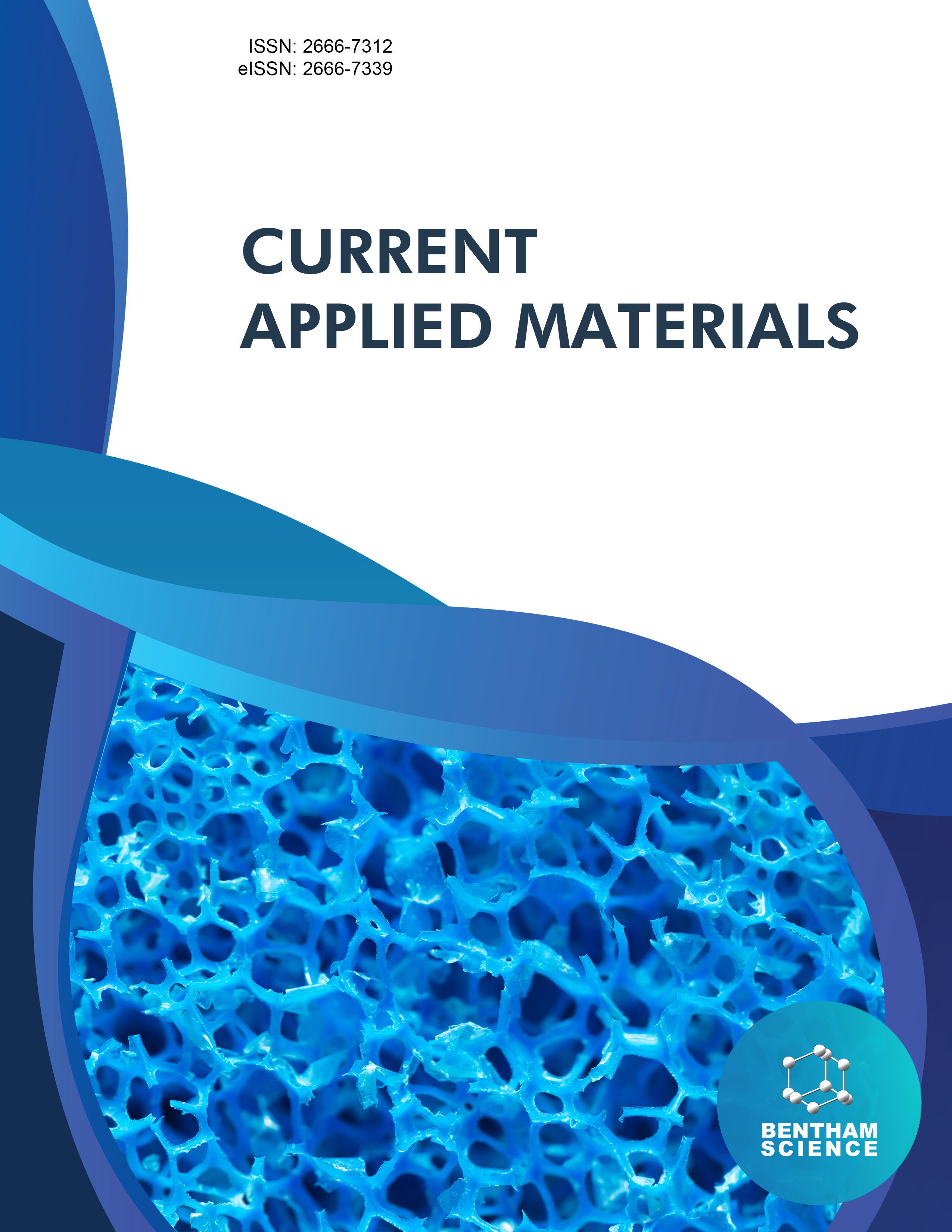- Home
- A-Z Publications
- Current Applied Materials
- Issue Home
Current Applied Materials - Current Issue
Volume 3, Issue 1, 2024
-
-
Development and Optimization of Polymeric Nanoparticles and their In vitro Deposition Studies Using Modified TSI
More LessAuthors: Bhushan R. Rane, Pranit S. Waghchaure, Akash J. Amkar and Ashish R. JainBackgroundTo deliver the drug through the pulmonary route, polymers like oleoyl-carboxymethyl chitosan (O-CMC), chitosan, and HPMC (hydroxypropyl methylcellulose) K4M are well known for their effective mucoadhesive properties. Drug-loaded polymeric nanoparticles have the potential for a therapeutic response for the targeted site is a beneficial approach.ObjectiveThe present study is to develop polymeric na Read More
-
-
-
Remote Sensing Revolution: Mapping Land Productivity and Vegetation Trends with Unmanned Aerial Vehicles (UAVs)
More LessAuthors: Shrikant Harle, Amol Bhagat and Ashish Kumar DashThis review paper offers a comprehensive exploration of the multifaceted applications of Unmanned Aerial Vehicles (UAVs) in various domains, showcasing their transformative impact in addressing complex challenges. The evaluation of cloud-based UAV systems' stability reveals their robustness and reliability, underlining their significance in numerous industries. Additionally, their role in enhancing robot navigation in in Read More
-
-
-
How to Author a Successful Manuscript for “Current Applied Materials”
More LessBy Kenji UchinoThis article provides insights into the manuscript submission process for the journal “Current Applied Materials,” published by Bentham Science Publishers. As seen from the Editor-In-Chief’s perspective, we have focused on Contributed and Review/Mini-Review articles.
-
-
-
Sustainable Material Approach to Safer Fire Extinguishers
More LessAuthors: Aparna Monga, Durgesh Nandini, Chandra Prakash Singh and Inderpal SinghThe world considers environmental concerns a top-notch priority and strictly finds eco-friendly ways to bring transformations. The widely used class of fire extinguishers, halons, has been extensively used for decades until they were acknowledged for producing hazardous components like HF, HCl, HBr, and COF2 and causing ozone depletion. This creates a surge in the search for a competent substitute with reduced toxins, easi Read More
-
Volumes & issues
Most Read This Month Most Read RSS feed
Article
content/journals/cam
Journal
10
5
false
en


